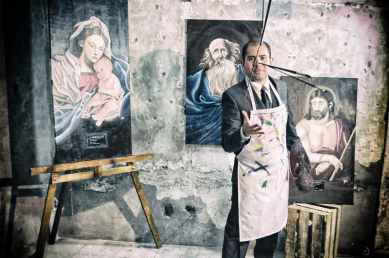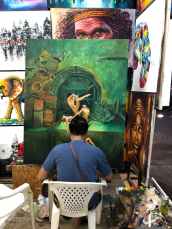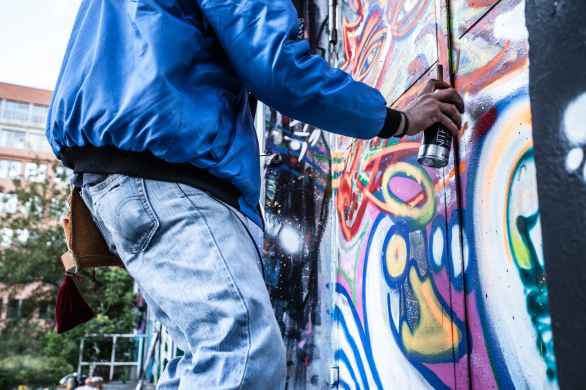Buying Paintings: Symbolism
Evoking a taste similar to the Romanticist tradition, but utilized mysticism and sensitivity through mythology and dream imagery, preceding the psychoanalytical work of Freud and Jung. With a strong philosophical touch, more so than a style of art, and Art Nouveau and Expressionist artists such as Edvard Munch. Beginning in France as a reaction to the movements of Naturalism and Realism, which seemed to capture the particular components of consensual reality, and presented spirituality and imagination reflecting some artists budding interest in religion and spirituality.
In literature, poet Charles Baudelaire was developing his work and the movement, and especially with such luminaries as Verlaine contributing to the collective effort of the literary movement during the 1860s and through to the 1870s. With the works of Edgar Allen Poe coming to popularity in the 1880s, the Symbolism movement in artwork represented an outgrowth into the darker and more gothic nature of Romanticism, and contrasted with Romanticism’s rebellious and impetuous sides. Symbolist writers wrote in very metaphoric and suggestive manner, to imbue the subjects with a sense of symbolic meaning, and made realistic images into representatives for more esoteric and primordial ideas.
In translating the language of dreams into artwork with symbolic leanings, discovering a visual style that draws upon that philosophical approach that captures a sense of art that has been influential on more than one movement artistically, and has evoked some of the more fantastic imagery to ever cross a canvas. The Symbolist Manifesto was published in 1886, leading to a description of the movement that included ideas such as being hostile towards plain and matter-of-fact meanings, and to express the ideal in a perceptible form was the sole purpose of this art form.
Symbolists that preferred poetic means of conveying their ideas, were known for their techniques of removing technical aspects to achieve a greater fluidity for their work, and became related with seeking use of symbolic images over raw description to evoke the state of the poet’s soul. Paul Verlaine was influential in an 1884 publication defining the essence of Symbolism, through many essays on the relevant poets of the day, and came to the conclusion of relating the works of this movement to the famed philosopher Arthur Schopenhauer, whose own work delved into art as a means of refuge from the strife of the world.
These similarities, which presented a contemplative and artistic refuge using themes such as mortality and otherworldliness, created disparaging arguments between critic and artist alike. Leading to many Symbolist poets of the day to make their own publications and periodicals, and the literary Symbolism then reached its’ peak in the year 1886, with one particular periodical lasting until 1965. Though the two aspects of the movement were distinct, they would occasionally overlap each other, and became a continuation for mystical tendencies in a Romantic tradition, even flirting with the self-consciously dark Decadence movement.
There were several dissimilar groups of painters and visual artists within the Symbolism movement, and the artistic movement seemed to have a greater impact worldwide than the literary movement, reaching multiple artists and sculptors from such distinct parts as Russia. Many of the symbols found herein are not necessarily universal, but more personally affected with the artist’s obscure and private references, with some dreamlike subject matter influencing later Surrealists. Symbolism has had a strong link to music for a while, and mostly due to the enthusiasm for the work of Richard Wagner, whose own music reflected his influence from the philosopher Schopenhauer.
Symbolism even grew to affect some of the literary fiction contributed by Oscar Wilde and Paul Adam, and has a pronounced ring when speaking about movements that have literarily and artistically that have crossed over into other inner groupings of artistic work. The waters of Symbolism have even filtered down the centuries into the state of motion pictures today, and early on held influence with Russian playwright Anton Chekhov, as well as Russian actor and director Vsevolov Meyerhold’s method of acting that influenced early motion pictures.
It is difficult to overlook Symbolism’s influence and repercussions throughout the timeline to the current period of the world, as it drifts through many aspects taken for granted on a daily basis, and many pieces of work for many artists from writer T. S. Eliot to painter Pablo Picasso and even the state of horror films as well. A decidedly different state of the world now has interpreted and reinterpreted all this throughout these hundreds of years, and created more and more material reflections of the state of things as they happen to be.
Website Stores



Two Old Guys Folk Art
Share this:










No comments:
Post a Comment